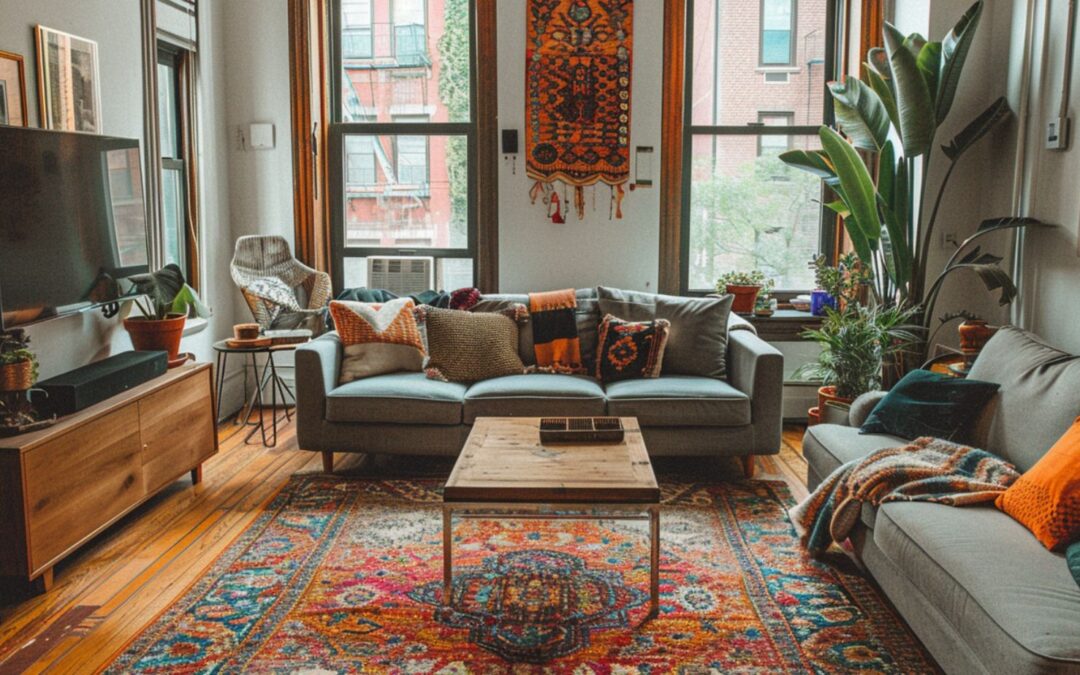Urban living comes with its fair share of environmental challenges. From poor air quality to high levels of dust and allergens, city dwellers often struggle to maintain a clean and healthy home environment. An effective solution can be an air purifier, which aids in improving indoor air quality by filtering out pollutants.
However, selecting the right air purifier is crucial to ensure it meets your specific needs, which is why this comprehensive guide aims to help consumers navigate various options and make educated decisions.
Why Air Purifiers are Essential for Urban Living
Urban environments typically suffer from higher pollution levels compared to rural areas. Pollutants such as smoke, pollen, and vehicle exhaust permeate the air, making it less breathable. Indoors, the situation can worsen due to the accumulation of pet dander, cooking fumes, and household chemicals. Installing an air purifier can significantly improve air quality by removing these airborne contaminants, thereby enhancing health and well-being.
Understanding Different Types of Filters
HEPA Filters
HEPA (High-Efficiency Particulate Air) filters are among the most popular choices for cleaning indoor air. These filters are highly efficient at capturing small particles like dust and dander. They work by trapping pollutants in their fine mesh, ensuring cleaner air output. Ideal for households with allergy sufferers, HEPA filters can potentially contribute to healthier breathing conditions.
Activated Carbon Filters
Activated carbon filters are another effective type widely used in air purifiers. These filters excel at eliminating odors and volatile organic compounds (VOCs). By absorbing impurities through their activated carbon surfaces, they reduce odor and gaseous pollutants. This makes them particularly useful in kitchens and homes where strong smells prevail.
UV-C Light Purifiers
UV-C light purifiers use ultraviolet light to neutralize microorganisms such as bacteria, viruses, and mold spores. These systems deactivate harmful pathogens, rendering them harmless. While not a filter per se, UV-C technology often complements other filtration systems, providing an additional layer of protection against biological contaminants.
Key Factors to Consider When Choosing an Air Purifier
Room Size
The size of the room where you plan to use the air purifier is a critical factor. Ensure that the device is capable of handling the square footage of your space. Manufacturers usually provide guidance on the ideal room size for each model, helping you select one that matches your needs. Using an undersized purifier in a large room will render it ineffective.
Noise Level
Air purifiers come with varying noise levels. For bedrooms and offices, quieter models are preferable since they won’t disrupt sleep or concentration.

Conversely, noisier units might be acceptable for living rooms or kitchens. Check product ratings and reviews for noise specifications before deciding.
Filter Replacement Frequency and Cost
Filters require periodic replacement to maintain efficiency. Consider how often you’ll need to replace filters and the associated costs. Some filters last longer than others, impacting long-term maintenance expenses. Opt for purifiers with affordable and readily available replacement filters to avoid inconvenience.
Practical Tips to Maximize the Value of Your Air Purifier
Positioning the Purifier Correctly
Where you place your air purifier affects its performance. Position it in a spot where airflow isn’t obstructed by furniture or walls. Also, placing it near sources of pollutants, like windows or doors, ensures it captures contaminants more effectively.
Regular Maintenance
Routine maintenance is vital for optimal performance. Clean or change filters as recommended by the manufacturer. Regularly wiping down the exterior helps keep the unit free from dust buildup. Proper care extends its lifespan and keeps it functioning efficiently.
Monitoring Air Quality
Some advanced models come with built-in air quality monitors, giving real-time feedback on indoor pollution levels. If you purchase a basic model without this feature, consider using separate air quality monitors to assess its effectiveness and make adjustments as needed.
Comparing Different Purifier Types for Various Needs
Allergy Sufferers
Individuals with allergies benefit significantly from purifiers equipped with HEPA filters. These filters excel at capturing allergens, reducing symptoms, and promoting better respiratory health.
Odor Control
If controlling odors is your primary concern, choose units that incorporate activated carbon filters. These filters eliminate common household smells, ensuring fresher indoor air.
Bacteria and Virus Removal
Households concerned about bacteria and viruses should look for models featuring UV-C light technology. These purifiers can potentially deactivate microorganisms, adding an extra layer of safety and cleanliness to the home environment.
Reading Consumer Ratings for Informed Decisions
Before making a purchase, delve into consumer ratings and reviews. Feedback from other users provides invaluable insights into the purifier’s performance, durability, and ease of use. Look for consistent positives and negatives across multiple reviews to gauge reliability.
- Pay attention to comments about filter longevity and replacement ease.
- Note any mentions of noise levels, particularly if looking for a bedroom model.
- Check for remarks regarding the overall build quality and design.
Additional Features to Enhance Usability
Smart Connectivity
Modern air purifiers increasingly offer smart features, allowing control via smartphone apps. These features let users adjust settings remotely, schedule operations, and monitor air quality without being physically present.

Convenience and ease of use are significant benefits of smart-enabled devices.
Energy Efficiency
Energy-efficient models consume less power, which is kinder to both the planet and your wallet. Look for energy ratings and certifications indicating lower electricity usage during operation. Such models provide ongoing savings while maintaining air quality.
Design and Aesthetics
An air purifier shouldn’t just function well; it should also complement your home’s decor. Sleek, modern designs blend seamlessly with interior styles, so consider models that not only perform but look good too.





